Do opposites attract? ALPHA-g prepares to explore antimatter gravity
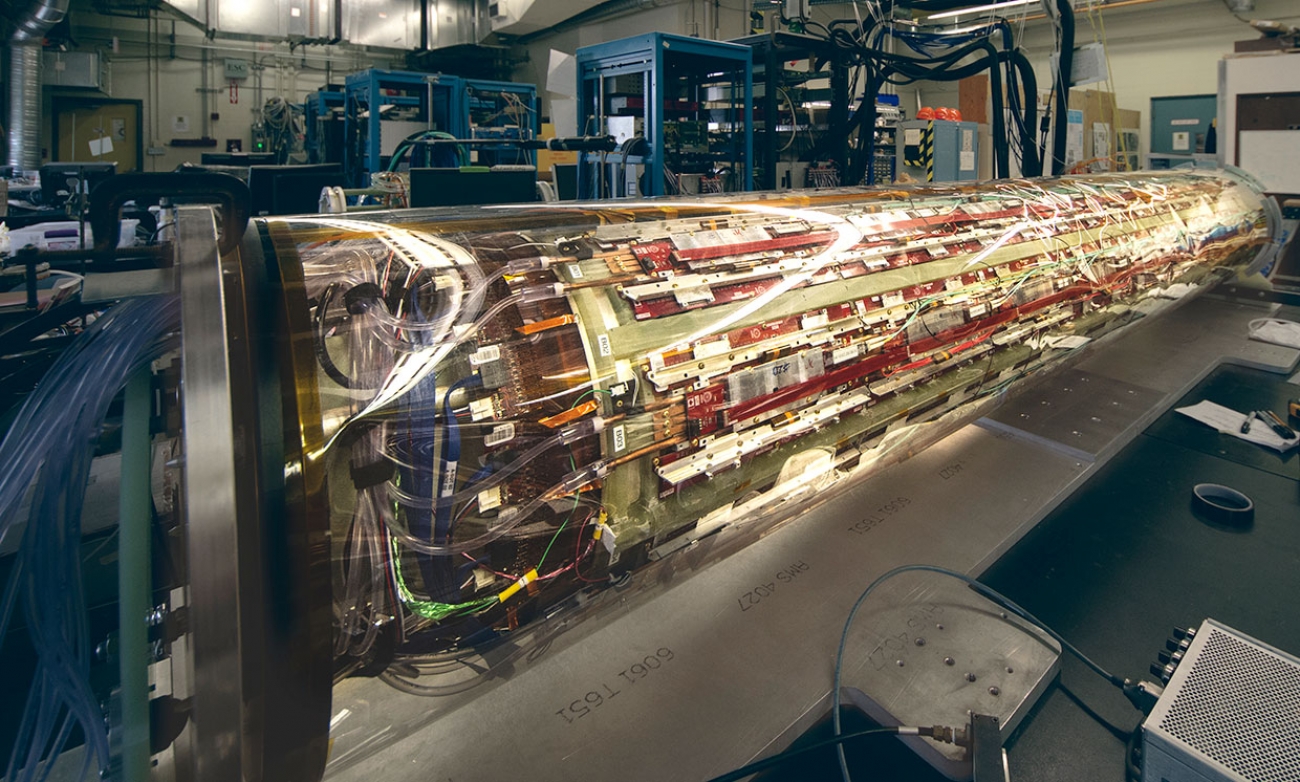
Stuff falls down. This is the universal experience we all have with the gravitational interaction of matter on Earth. Yet one may still wonder if this holds true in the case of the most elusive stuff you can imagine dropping: antimatter. Might it be the case that in the famous anecdote about Newton’s insight into Gravity, an antimatter apple would have fallen up, rather than down? From Einstein’s general theory of relativity, the weak equivalence principle (WEP) tells us that antimatter should fall down precisely like matter does. The answer from a direct experimental test has yet to be obtained though, and there is potential for a leap in our understanding in the case of a result that defies the WEP.
The ALPHA-g experiment is designed to perform exactly this experimental test. Building on a decade of experience with magnetically trapping and subsequently releasing neutral antimatter in the form of antihydrogen atoms [1], ALPHA-g (Figure 1) will carefully release anti-atoms and record their annihilation positions as they hit the vacuum chamber walls. A radial Time Projection Chamber (r-TPC) (Figure 2) surrounding the trapping volume tracks the charged pions resulting from antiproton annihilations to reconstruct the annihilation locations. The magnetic minimum trap is created by an octupole winding in the radial (horizontal) direction, and short solenoidal “mirror” coils in the axial (vertical) direction, see Figure 1. The well depth is around 0.5 K equavalent to about 50 μeV. Antihydrogen atoms are synthesized inside the magnetic minimum trap by controlled mixing of antiproton- and positron plasmas in a Penning trap, and only a small fraction is born with sufficiently low energy to remain trapped.
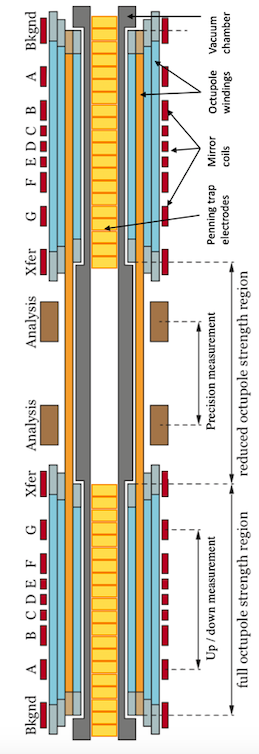
Figure 1. Schematic view of the ALPHA-g inner apparatus (not to scale). Penning traps in the bottom and top regions catch antiprotons and positrons injected from the bottom, cool and compress them, and combine them to form antihydrogen. Not shown but surrounding all of the displayed components are the annihilation detector (Figure 2) and an external solenoid providing an axial 1T background field.
The gravitational potential presents an even smaller energy scale with less than 0.5 mK of potential difference across the trap (assuming normal gravity). To see how the local gravitational acceleration of antimatter g, can then be measured, consider first a release of trapped antihydrogen by synchronously lowering the upper and lower barriers of the magnetic bottle created by the mirror coils at each end, while keeping them equal in magnetic field strength. The potential felt by an atom in the trap is the sum of those due to the magnetic field and to gravity: φ(r) = μΒ |B(r) | - mΗ g r, where μΒ is the Bohr magneton, and mH is the antihydrogen mass.
The presence of gravity in this case makes one of the barriers easier to overcome, and if the release is slow enough that atoms have time to bounce off the barriers many times as they are lowered, most of the atoms will come out in the direction that gravity is pointing, creating an imbalance in the number of annihilations detected just above and below the trapping region by the annihilation detector. In a realistic measurement, unequal magnetic fields will be applied at the two barriers to counteract the gravitational pull. The amount of compensation can be scanned over the course of many such releases. A balance of equal numbers of atoms escaping upwards and downwards then signals that the applied difference in magnetic potential equals the gravitational potential difference between the upper and lower barrier, μΒ ΔB = mH g Δh.
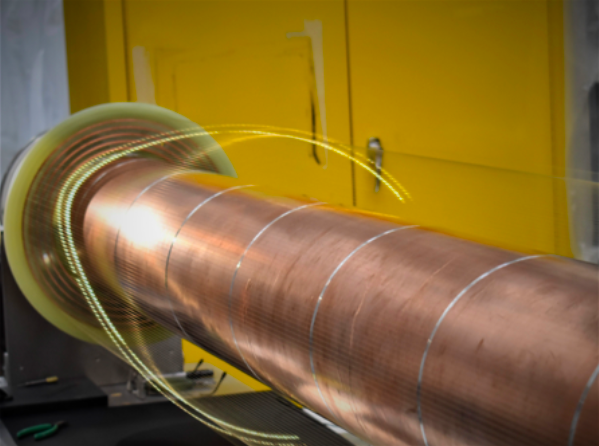
Figure 2. The ALPHA-g r-TPC which was constructed at TRIUMF in Canada. 256 anode wires provide the radial drift field for electrons resulting from ionizing particles. The r-TPC has a total length of 2.3 m and is expected to have a resolution for vertex reconstruction of about 5mm in the vertical direction
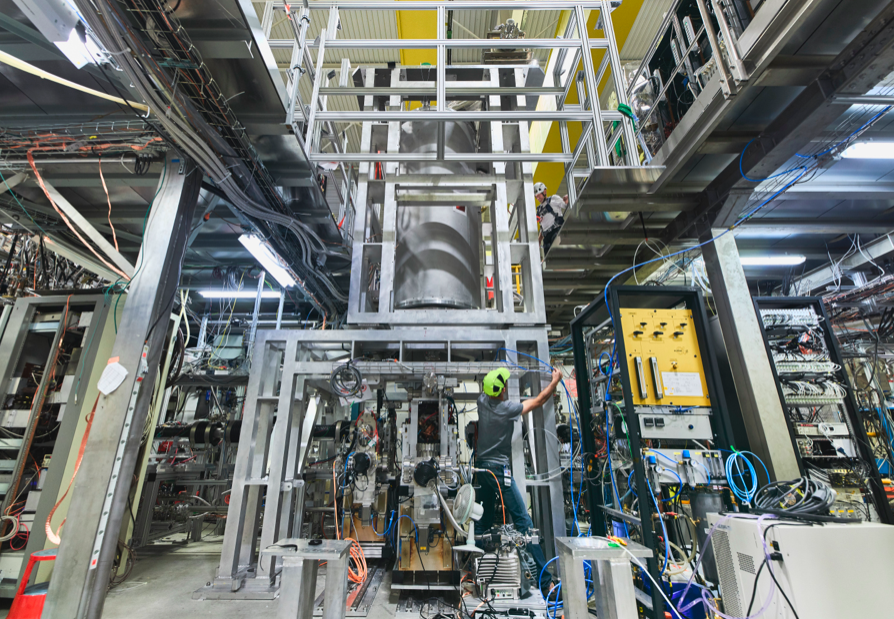
Figure 3. ALPHA-g viewed from the ALPHA zone in 2018. Antiprotons arrive from the left in the picture, positrons from the right, and each are bent from their respective horizontal beamlines into the vertical path leading up into ALPHA-g.
ALPHA-g (Figure 3) was initially constructed in 2018 and commissioned in the last few weeks of antiproton beams at the Antiproton Decelerator (AD) before the start of the second Long Shutdown (LS2). In the configuration installed in 2018, it featured a single measurement region, shown at the bottom of Figure 1. Aside from being oriented vertically rather than horizontally, this region is conceptually identical to previous ALPHA machines [2]. Initial measurements to detect a signal of antimatter gravity and settle the question of whether antimatter falls up or down are planned to take place in this measurement region, using the mirror coils labelled A and G as the vertical barriers. With the return of antiproton beams and the startup of the ELENA ring scheduled for August 2021, three experiments will be competing to observe the first signal of antimatter gravity using three different mechanisms. The GBAR [3] and AEGIS [4] experiments will each be developing new techniques to apply to this unique measurement. With all of these efforts well under way, there is a chance that the milestone of a first antimatter gravity measurement might be reached already in this relatively short first data taking season after LS2.
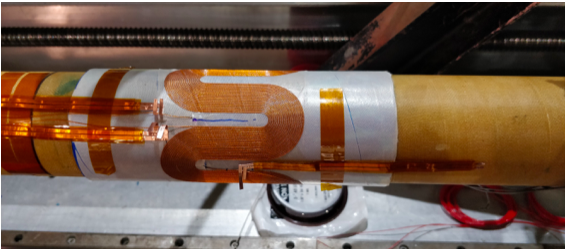
Figure 4. Winding one of the new magnets in ALPHA-g at Brookhaven National Laboratory. This is an octupole corrector coil for one of the analysis coils in the precision region, allowing a more radially uniform barrier against vertical escape of trapped antihydrogen.
To study antimatter gravity in more detail though, some upgrades to ALPHA-g have been underway throughout LS2, and are now nearing completion. Key among them, several new superconducting magnets have been added to make a total of three separate trapping and measurement regions. The bottom-most region is unchanged from the 2018 configuration. In the middle of the experiment is now a precision measurement region, with the two analysis coils indicated in Figure 1 providing more carefully shaped barriers against vertical escape (See Figure 4). Antihydrogen will not be produced in the precision region, but will instead have to be transported from either the bottom region or the top region, using an adiabatic expansion from a shorter production region to cool the atoms in the process. A key feature of the precision region is the minimization of nearby superconducting material. Precise control of the magnetic fields is going to be paramount in pursuing higher precision measurements of g, and persistent currents induced in the superconductors will contribute systematic field errors that are difficult to predict and control. Similarly, the top region, aside from providing another production region and more opportunities to explore systematic effects, is designed to be magnetically an exact mirror image of the bottom region, which will tend to cancel the effects of induced persistent currents in the precision region. The design goal for this precision region is to eventually reach a precision of better than 1% on the determination of g [5].
References
[1] G. Andresen et al., “Trapped antihydrogen,” Nature, vol. 468, pp. 673-676, 2010.
[2] C. Amole et al., “the ALPHA antihydrogen trapping apparatus,” Nuclear Instruments and Methods in Physics Research Section A: Accelerators, Spectrometers, Detectors and Associated Equipment, vol. 735, pp. 319-340, 2014.
[3] GBAR collaboration, “Proposal to measure the Gravitational Behaviour of Antihydrogen at Rest,” 2011. [Online]. Available: https://cds.cern.ch/record/1386684.
[4] A. Kellebauer et al., “Proposed antimatter gravity measurement with an antihydrogen beam,” Nuclear Instrum. and Methods in Phys. Research B, vol. 266, p. 351, 2008.
[5] ALPHA collaboration, “Spectroscopic and gravitational measurements on antihydrogen: ALPHA-3, ALPHA-g and beyond,” 2019. [online] https://cds.cern.ch/record/2691557
